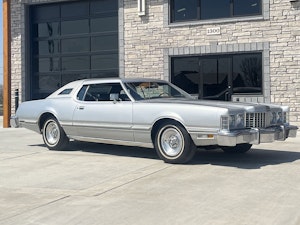Media | Articles
5 cars that are more than just cars
The auto industry has become so specialized that cars are often good for one task but don’t cross over into different categories. Family hauler, work truck, fuel-sipping commuter—there is nary a vehicle that can multitask well. A few try to pull it off, even fewer actually do. Here are five examples that take the multi-purpose car to an extreme and try to blend the duties of a car with the duties of, well… other vehicles.
Amphicar Model 770

Commonly called, simply, the Amphicar, this amphibious vehicle’s full name is Amphicar Model 770 and they were produced from 1961–68. The 770 denotes the capabilities of the little German-built convertibles—7 mph in water, 70 mph on land. The twin nylon propellers for in-water propulsion are driven from a two-part transmission which allows the driver to select where the engine power is sent—to the props, the wheels, or both. The front wheels act as rudders while submerged, which seems a bit crude to us, but if it works…
Chevrolet Blazer Chalet

The Blazer Chalet is a cross between an SUV and a house. I know what you are thinking, RVs exist and are not special. This is a special RV, though, mainly because I think it’s super cool. A chalet can be defined as a remote herdsman’s hut in the Alps, which makes it an interesting designation for a Chevrolet model that was never sold outside the U.S. Utilizing the sturdy Blazer chassis and body as a base, a topper was added that raised the roof and built out—albeit small—living quarters. With a short wheelbase and small-block Chevy power, the Blazer Chalet and its GMC sibling the Jimmy Casa Grande (aren’t those available at Taco Bell?) made for perfect escape vehicles for those looking to run to the hills—whether for a weekend or the foreseeable future.
Marketplace
Buy and sell classics with confidence
Aerocar One
20190429142620)
Blending cars with other modes of transportation is a pie-in-the-sky dream, unless you own an Aerocar One. Then it is a car-in-the-sky dream. Powered by a Lycoming 0–320 four-cylinder, the driver (or pilot, depending on how you look at it) chooses to spin the rear wheels or a tail-mounted prop. The tail section and wings fold up in a manner that lets grown adults play with a Transformer—although it is unclear if the Aerocar would fall on the Autobot or Decepticon side of the battle. Either way, if you decide that traffic is just too much for you, make a beeline to your nearest airstrip and take to the sky.
Volkswagen Schwimmwagen

That’s right, another car-boat combination. The Amphicar and the Schwimmwagen both trace roots to Germany, but they’re also two different solutions to the same problem. The Schwimmagen was the amphibious solution for the military, a vehicle that could traverse both land and sea. Rather than the switchable transmission of the Amphicar, however, the VW utilizes a power-take-off (PTO) to drive a prop which can be flipped up for storage while traversing the countryside. You won’t be going anywhere fast, as the powerplant is a 25-horsepower air-cooled flat-four, but between the amphibious capability and the four-wheel drive, I doubt much would stop this from moving forward—except a big hill (or, in a military situation, a weapon of some sort).
Model T (with a kit or two)

I’ll admit, this is a bit of a cheat on my part, but the kits available for Model T Fords are so cool that they have to be included, particularly the snowmobile rig. By replacing the front wheels with wooden or metal skis, adding a tag axle on the back, and wrapping the now-four rear wheels with tracks, a person could convert their humble Model T into a drift-conquering snowmobile. (A similar kit was available for the Model A.) The only problem was the skis do a laughably poor job of steering the vehicle in the direction you want it to go. Interestingly, the kits were sold in three gauges (track width for non-railheads): a 56-inch automobile width, a 44-inch horse-drawn bobsled width, and a very narrow 38-inch sleigh track width—in case Santa needed a little help on his December midnight run?









